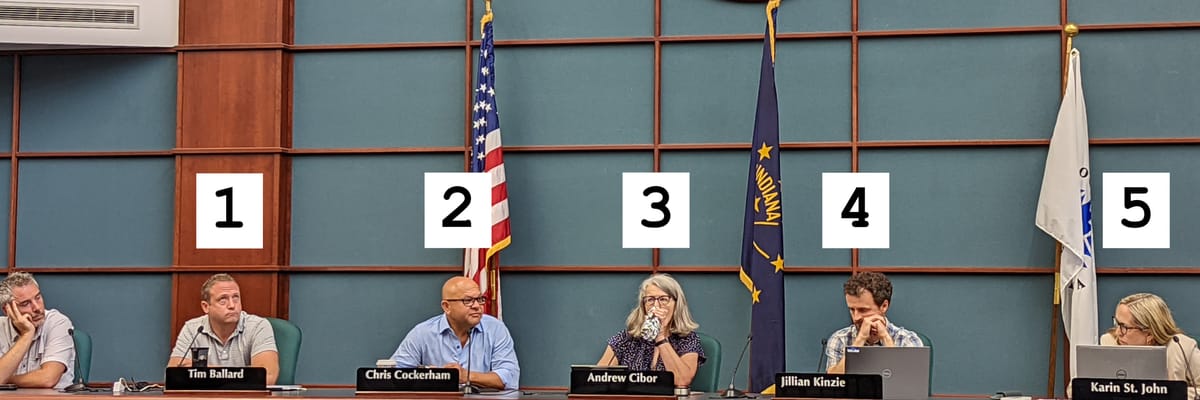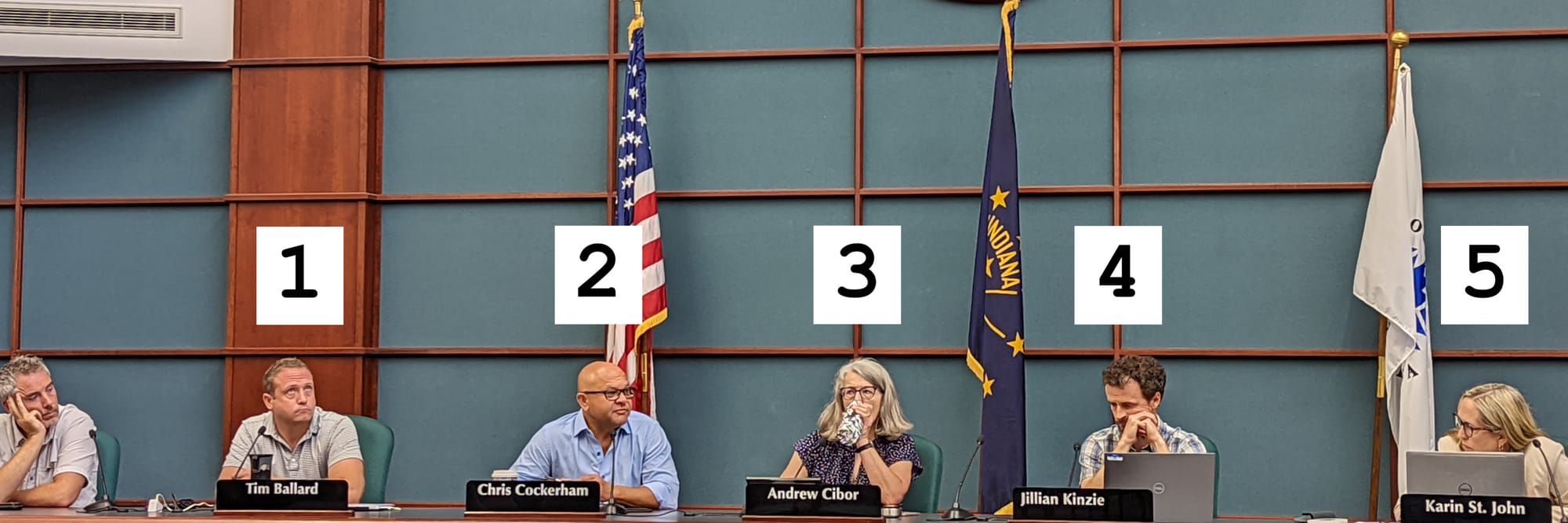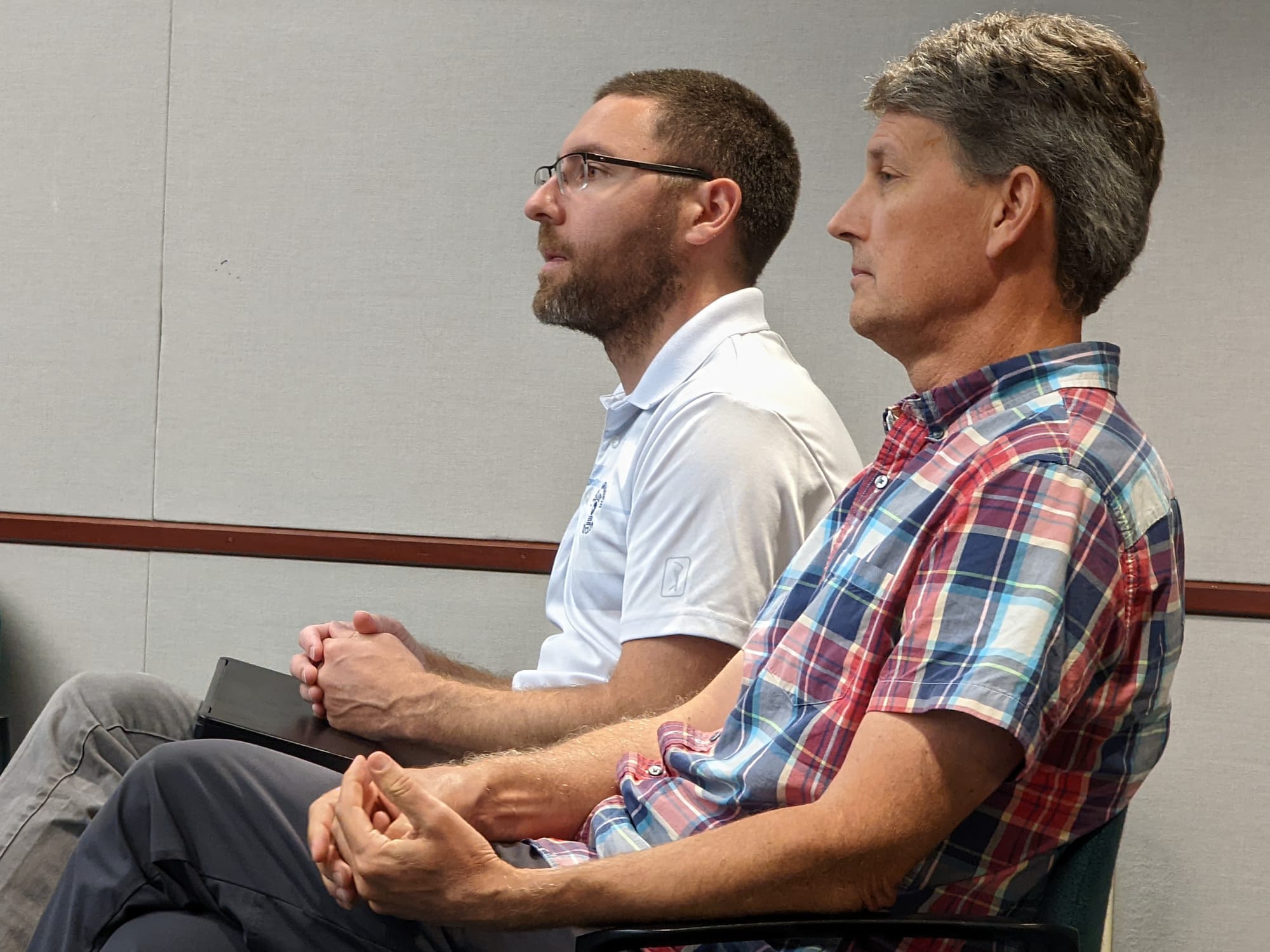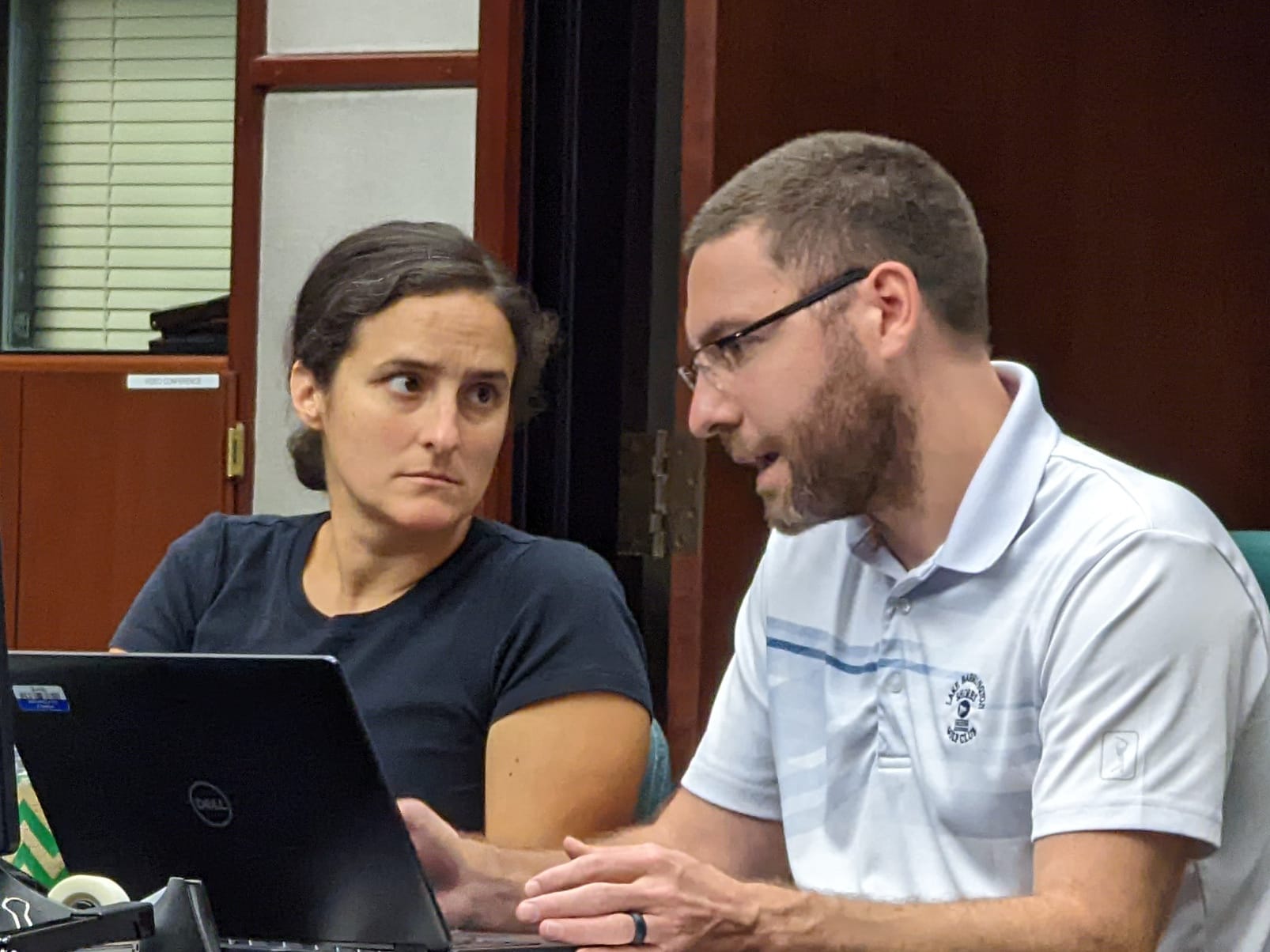City council’s tighter parking space limits left alone by short-handed Bloomington plan commission




The maximum number of parking spaces allowed for restaurant parking in Bloomington will remain, for at least a while, at 10 per 1,000 square feet of gross floor area.
That’s one main result from the Bloomington plan commission’s Tuesday morning special meeting.
The other outcome from the meeting was that stadiums, if any new private facilities get built, will have a limit of 1 parking space for every 8 seats. That’s instead of the 1 space for every 4 seats that had originally been recommended by the plan commission three months ago.
Those outcomes reflected the amendments that Bloomington’s city council made to the plan commission’s recommended ordinance, when the council took action at its June 21 meeting.
The plan commission’s original recommendation, which it made on April 10, had been to increase the restaurant parking from 10 spaces to 15 spaces per 1,000 square feet of gross floor area.
At Tuesday’s meeting, the plan commission voted 5–0 to approve the ordinance, as amended by the city council. Four plan commissioners were absent.
When changes to zoning code are made, the city council does eventually have the final word—but under state law, the plan commission gets a chance to make the council speak its final word again.
Any amendment made by the city council to a zoning ordinance has to go back to the plan commission for its stamp of approval. If the plan commission disapproves of the amended ordinance, the matter goes back to the city council, which has a second chance to either affirm its original amendments or to accept the recommendation of the plan commission.
For the most part, Ordinance 23-10 had found favor with the city council. About 70 different land uses that are listed out in the UDO did not have any limits on the number of parking spaces.
The ordinance added limits to those land uses—which is consistent with the city’s comprehensive plan and the general sentiment shared by some council members that the UDO should permit as little parking as possible, while still allowing a specific land use to be viable.
Among the land uses that got limits added by Ordinance 23-10 were group care homes, cemeteries, police stations, schools, kennels, and transportation terminals, among others.
The ordinance could have a potential impact on the planned Monroe Convention Center expansion. Struck from the UDO was the “no limit” clause for structured convention center parking, which makes convention center parking generally subject to the limit of 2 spaces per 1,000 sq. ft. of gross floor area.
Going the opposite direction was the increase to the number of restaurant parking spaces that are allowed.
So the city council adopted the ordinance at its June 21 meeting, but with two amendments. One amendment that cut in half the number of stadium parking spaces that are allowed. The other amendment restored restaurant parking limits to the 10 spaces per 1,000 sq. ft. of gross floor area that are currently in the UDO.
Planning staff and the plan commission had recommended the increase in the restaurant parking limit, based on some restaurants that had wanted more parking spaces than are allowed, and had gone in front of the board of zoning appeals (BZA) to get a variance.
The idea was that by putting the extra five parking spaces in the zoning code, the process could be streamlined for people who are trying to launch a new restaurant.
At Tuesday morning’s meeting, plan commissioner Chris Cockerham noted that going in front of the BZA meant a delayed timeline, which would add to costs.
With only five plan commissioners present on Tuesday, that meant any decision to approve the council’s ordinance as amended, or to disapprove of it, would have to be unanimous. That’s because in order to take any action, the plan commission has to have a majority of its members—that is, at least five—vote in favor of a motion, no matter how many are present at a meeting.
Based on plan commissioner deliberations, it became apparent that a motion to disapprove the amended ordinance would not have a majority.
Commissioners were inclined to let the planning staff work on addressing the city council’s concerns about a lack of nuance in the 15-space restaurant parking limit, and to add that to next year’s routine package of UDO amendments, which the planning department is trying to assemble every spring.
If the plan commission is not able to achieve a majority on any action to respond to the city council’s amendments, then under state law, after sitting 45 days with no action, the city council’s action stands.
Recognizing that voting against the motion to approve the ordinance as amended would just delay the enactment of the ordinance, Cockerham voted yes, and that made the tally 5–0, given the plan commission the majority it needed. There is now no need to let the 45-day clock run out.
The special session was called when the item was inadvertently left off the plan commission’s previous meeting agenda. Waiting until the plan commission’s next regular meeting in August would have stretched past the 45-day statutory window for action, after the city council made its amendments.
On Tuesday, the planning staff’s presentation was made by development services manager Jackie Scanlan, who told plan commissioners that the city council’s amendments were “reasonable.” Planning and transportation director Scott Robinson was also on hand. Providing some commentary on the procedural issues was city council administrator/attorney Stephen Lucas.




Comments ()